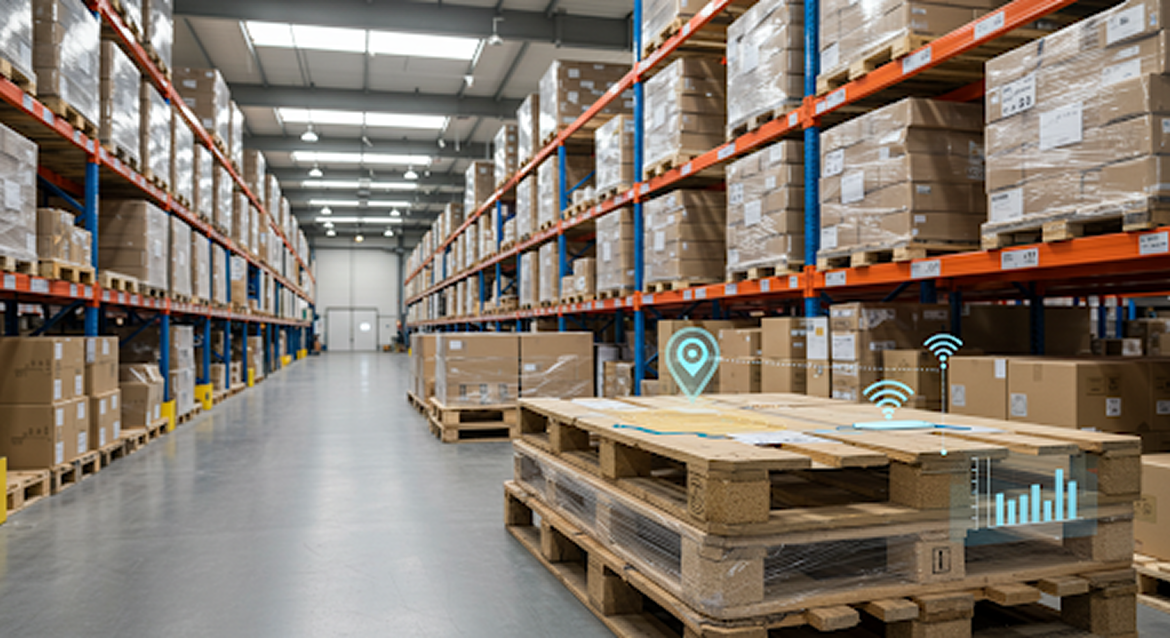Modern supply chains are more complex than ever. Pallets can move through multiple warehouses, fleets, and organizations on their way toward their final destination. Without a reliable way to track them, you risk compliance issues, costly delays, and lost inventory.
Pallet tracking has become increasingly important and complicated in this context. Read on to learn how you can optimize it to avoid unwanted consequences.
Why Pallet Tracking Matters in Modern Logistics
Pallets are simple, but they transport billions of dollars’ worth of goods every day. When they go missing or get sent to the wrong location, there are serious business consequences for companies across the supply chain.
Accurate tracking can help reduce shrinkage, theft, and shipment delays, while protecting your compliance. You’ll just need the right strategy to access these benefits.
Tip 1: Use Smart Labels Like RFID and Barcodes
Labeling is the foundation of managing valuable assets. Barcodes are the traditional method, and they work, but you have to scan them to locate them.
RFID tags are a faster, higher-tech solution for pallet visibility. They don’t require line-of-sight scanning, so you automatically get real-time updates at scale for inbound and outbound shipments. This helps you understand what’s going on with your pallets in much more detail than barcodes.
Tip 2: Standardize Labeling and Pallet Identification Protocols
Next, standardize your pallet management strategy across every touchpoint. A single missing link can disrupt the chain and waste everyone’s efforts. You may need to implement employee training as part of any updates you make.
Standardizing how your pallets are labeled and identified will do the following for your operations:
- Minimize confusion across warehouses and facilities (especially important when things go wrong)
- Streamline transitional steps, like cross-docking and third-party handoffs
- Simplify audits and compliance reporting through consistent methods
Tip 3: Implement Real-Time IoT Monitoring
If you’re looking for greater insight into your pallets, smart sensors and IoT devices are your best solution. Many of these devices offer GPS and environmental monitoring, letting you keep an eye on your pallets’ temperature, movement, and location.
Real-time IoT monitoring is a powerful tool for preventing loss. For example, it can alert you when temperatures exceed certain thresholds, so you can proactively jump in before perishables spoil.
Tip 4: Integrate with Warehouse and Transport Management Systems (WMS/TMS)
Pallet tracking technology is more effective when your data is unified. So, consider integrating your WMS and TMS. By doing so, you’ll gain:
- Centralized transparency across your entire supply chain
- Reduced errors thanks to fewer manual data entry steps
- Better fulfillment accuracy and improved order timing
Tip 5: Train Staff on Pallet Handling and Tracking Procedures
The next step is ensuring your staff knows how to follow the procedures you’ve created to maximize their effectiveness. You may want to start by explaining why pallet tracking matters and how important it is for them to follow your new rules. Be sure to discuss proper tag placement and scanning protocol, too.
Training your staff minimizes human error in your pallet workflow, so there are fewer misplaced pallets or tracking gaps. It’s a critical step that ensures your ideas are actually being carried out in practice.
When employees understand how pallet tracking works and why it matters, adoption and supply chain performance increase.
Tip 6: Use Analytics to Identify Bottlenecks and Optimize Routing
At this point, your new pallet tracking system is up and running. The only thing left to do is track your data so you can optimize and continue improving.
Watch for bottlenecks in your supply chain, inefficient routing, and lost merchandise. The metrics you use to track these should improve after updating your pallet tracking strategy. If they don’t, it’s a sign that you may need to tweak something or that your instructions aren’t being followed as closely as they should.
By watching these key performance indicators consistently, you can:
- Find trends in delays or inefficiencies that could be holding your business back
- Optimize routes and dock scheduling as conditions change
- Improve asset utilization across fleets
- Support predictive maintenance for critical equipment with more accurate scheduling
A Smarter Pallet Tracking System Starts with the Right Technology
Finding the right technology and partners can considerably simplify pallet tracking. At Trackonomy, we offer scalable services that combine real-time visibility with IoT monitoring and advanced analytics. It’s an all-in-one solution for streamlining operations, cutting losses, and improving customer outcomes.
For example, you can implement plug-and-play IoT systems tailor-made to match your unique logistics needs. We also provide reliable support, seamless integrations, and actionable insights through our advanced analytics platform. This makes it easier to build a smarter, more connected supply chain.
Next Steps for a Stronger Supply Chain
Pallet tracking may not be the flashiest part of logistics, but it plays a critical role in the supply chain. From preventing theft to improving customer satisfaction (and loyalty), tracking pallets more effectively can drive a variety of powerful business benefits, including cost savings and operational efficiency, to name a few.
Are you ready to bring full visibility to your pallets? Get in touch with Trackonomy today and learn how our solutions can streamline your operations.
